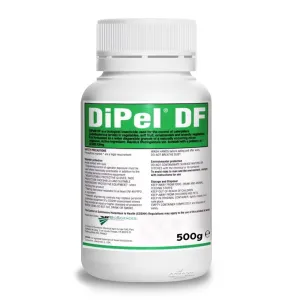What is Oak Processionary Moth?
It is the caterpillars (larvae) of oak processionary moth which are most damaging. They are called a processionary moth because of the way they move nose-to-tail in procession on the tree. They can also move together on the ground but near the base of the tree. They tend to cluster together.
OPM will only complete one lifecycle per year. The adult moth will lay eggs between July and September on branches and stems of the Oak trees. They will develop over winter until March-May the following year when they will hatch into a caterpillar. As the climate changes and the temperatures increase, the eggs are hatching earlier. This year they have been seen as early as March. Once the caterpillars have hatched, they can remain as larvae for many weeks as they go through 6 growth stages. As they feed they will grow and will start to move down the tree building nests on branches as they go. The nests are made from a white webbing but will become brown as they age. As the caterpillars get older they are harder to see as they will feed during the night and return to the nest in the day.
In June and August the caterpillars will pupate in the nests. In July to September the adult moths will emerge. They don’t have any particularly obvious distinguishing features so can be quite difficult to identify from other moths.
Damage Caused
Both of Britain’s most common oaks are susceptible - the Turkey Oak (Quercus cerris) and the Common Oak (Quercus robur), but the other less common varieties are also affected.
The caterpillars will quickly eat the leaves of the Oak trees leaving just the skeleton veins of the leaf. Although the caterpillars will complete their life cycle only on oak trees, they will move onto other trees to feed. Other plants include: birch, hornbeam or beech.
Unfortunately, damage to the trees isn’t the only problem. The caterpillars develop thousands of tiny little hairs as they become older. They contain an irritating substance called thaumetopoein which is released into our skin via barbs in the ends of the hairs. In most people this will cause an itchy rash but some people can experience sore throats, eye irritation or breathing difficulties. Some people may be allergic to them. The problem with OPM caterpillars is you don’t have to touch a caterpillar to become irritated by them. The hairs from the caterpillars can travel when they are blown by the wind, particularly if a nest old or new has been disturbed.
We recommend Dipel (bacillus thuringiensis). This is a biological method of control and the preferred method. This is a contact and ingestion acting pesticide so needs to be applied when the caterpillars are present.
Dimilin (diflubenzuron) As dipel, this also has contact and ingestion action and is particularly effective on the first 2 stages of the caterpillars lifecycle.
Decis (deltamethrin). This also needs to be applied when the caterpillars are present but it is more effective on the later stages of the caterpillars lifecycle than Dimilin or Dipel.This is more of a broad spectrum insecticide and will also control some non target species including some beneficial insects.
Repeat application may be necessary but individual product labels need to be checked for maximum application rates.
For more information, please get in touch with our sales team on 01522 246491.




